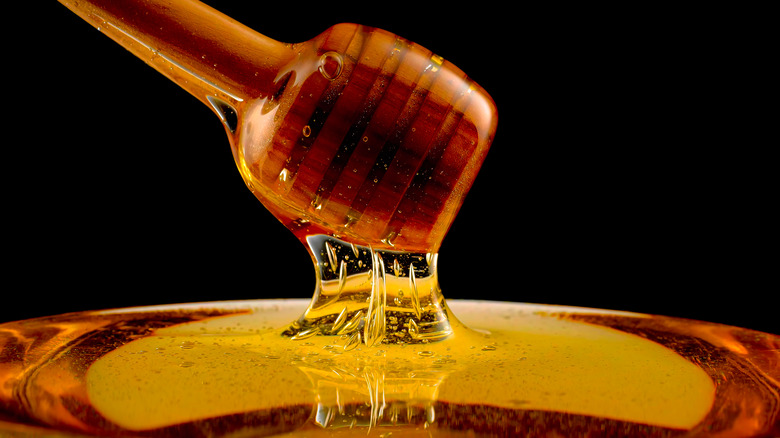This Is What Kept The Vikings Warm During Tough Winters
The Vikings have a fierce reputation. We think of them as the people in the longboats who attack and pillage villages, although that's not exactly the only thing they did. Coming from Scandinavia, the Vikings had sailed all over Europe, and their traders may have even reached as far as Iraq and North America.
The other thing we assume about Vikings is that they were fully equipped to handle the winters of their homeland. Sure, they didn't wear horned helmets, but they did know how to keep themselves warm and stylish at the same time. Or so we think. The Vikings had many ways to make sure they didn't freeze to death, and some of these may be a bit surprising.
Of course, we can expect the Vikings to use their clothing to keep warm. According to Life in Norway, historians know very little about what Vikings wore, thanks to the scant archeological evidence. Materials like cloth don't preserve well. Researchers believe they can get some clues from early Germanic tribes and what they wore. They conclude that to survive the cold, the Vikings learned the value of layering reasonably early.
History on the Net explained Vikings used a lot of wool and fur for their clothing. They had cloaks, hats, and socks made of wool.
Men most likely wore a base layer of a long-sleeved shirt, while women had a linen dress. On top, they'd either wear a tunic or another dress. Vikings also wore leggings for additional warmth.
Even Viking warriors need warmth
The Vikings extended their warm clothing to warrior garb. The Vikings sailed to many lands, where they probably had no idea what the weather would be like. Before they set sail, however, they would pack their usual cloaks. Warrior outfits often had to be more robust to withstand battle, so their warm clothes were made with thicker material such as sheepskin, said Life in Norway. Tunics, too, had to be thicker.
The idea is that a Viking warrior has to be warm before running into battle or a raid. While it's not specifically for warmth, they also wore thick leather body armor to help deflect weapon hits. Yet, as anyone who regularly rocks a leather jacket knows, leather gets hot.
The Vikings practically perfected surviving long winters, so that's probably why they have many ways to keep warm and toasty. Per The Medievalists, the Vikings built much of their culture around winter. They planned to fish or seek new lands when the sea wasn't frozen over. Even their entertainment and religion revolved around winter and making sure they don't get screwed over by the weather.
Other than hats, socks, leggings, and leather, Vikings found different ways to be comfortable in the cold climate of early Scandinavia. And no, it didn't involve sitting in front of a bonfire as they raided faraway villages.
Vikings loved honey
When Vikings want to make sure they're warm and cozy, they drink honey. That's right, honey.
Forbes said honey was more than just food for the Vikings. Honey was considered liquid gold, and it was what they drank when they celebrated something.
The Vikings were known for mead, a type of ale made by fermenting water and honey with yeast. The species of bee most likely bred by the Vikings were a hardy type and produced enough honey for people to use even during the very harsh winter months. Not only did the honey sweeten up their drinks, but the alcohol also helped warm their bodies.
Nordic Culture noted mead was a drink enjoyed by both the nobility and the common folk. The Vikings drank a lot of it, usually with most meals, and they even flavored mead with other herbs, fruits, and spices.
Mead was so important to the Vikings that it influenced the structure of their villages. They had mead halls where people gathered for meals or celebrations. It featured in their folk stories, particularly in Norse mythology. There's even a Norse saga dedicated entirely to mead.
Honey didn't just feature in Viking alcoholic beverages. It was also used to sweeten up meat they preserved during the winter.


